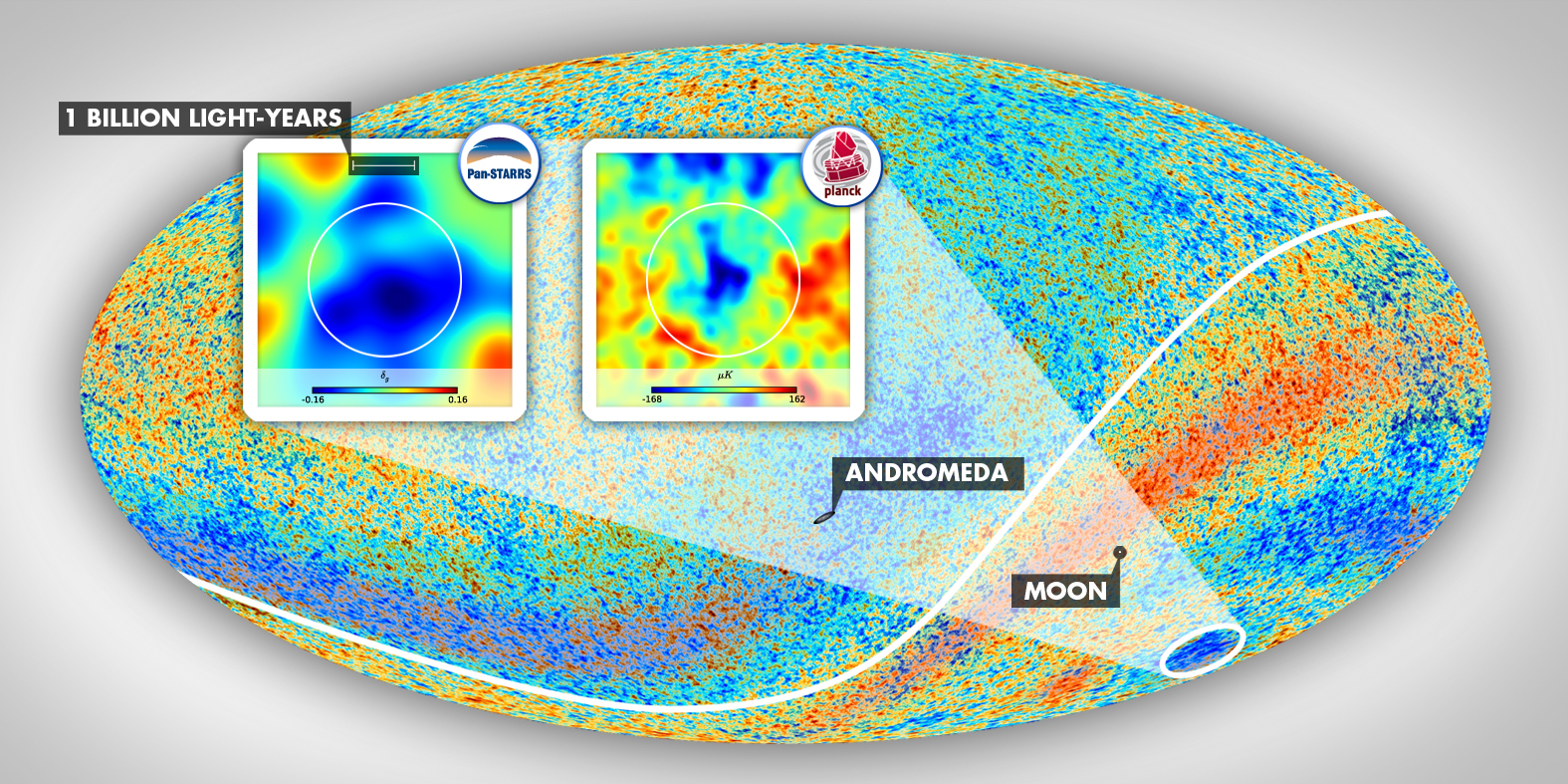The Cold Spot on the Cosmic Microwave Background was first identified 10 years ago. It is an unusually cold and large region visible by eye on the temperature maps. First seen in WMAP, and now remeasured with Planck, the properties of the Spot are very curious. It has been hypothesised to be a cosmic defect left over from just seconds after the big bang. If the CMB radiation is like light emitted from a movie projector, this defect hypothesis proposes that there is a bubble in the lens of the projector distorting the image.
Alternatively the Cold Spot may be due to a more recent phenomenon in the history of the Universe that is imprinting itself on the radiation, like if I stand up in the movie theater leaving my shadow on the screen.
Cosmic voids can produce this kind of effect. Voids are nearly empty regions of space. The lack of galaxies in the void means that there is a hill in the gravitational potential and photons will feel it as well and experience a gravitational redshift. A photon crossing a void will first lose energy as it climbs the gravitational potential, but once it has crossed the midpoint it will regain the energy, like a cyclist reaching the top of a hill and then coasting down. The phenomenon is known as the Integrated Sachs-Wolfe effect.
After losing and regaining energy, the final state of the photon depends on the acceleration of the Universe during the process and on the amount of Dark Energy in the Universe. It also depends on how gravity works so will be different in modified gravity theories.
The recent study led by Dr. Szapudi and Dr. Kovacs and co-authored by DarkLight fellow Ben Granett is the first to identify a supervoid structure aligned with the Cold Spot giving an indication as to the origin of the mysterious feature.
The result builds on previous work by Dr. Granett to map the galaxies at low redshift in the direction of the CMB cold spot. At that time we did not have sufficient data to detect a void at very low redshift where the Dark Energy effect is expected to be strongest. Now with Pan-STARRS1 data we are able to survey a larger area on the sky with galaxy redshift estimates allowing us to count the density of galaxies in three dimensions.
What is the origin of the supervoid?
As the Universe expands voids grow and become emptier. However if we go back in time, the formation of this supervoid was indeed a very rare event. But, the formation is not so rare as to be totally unexpected in the standard cosmological model.
What can we learn from the result?
What is most significant is the strong cooling effect that this void has on the CMB radiation. We think that photons crossing the structure over cosmic time have been cooled due to the accelerated expansion of the Universe driven by Dark Energy. However, the extra-strong effect that we observe is not predicted by the standard model. This may indicate a new behavior for Dark Energy. Looking at voids is particularly interesting because, since they represent a lack of matter they are strongly affected by the anti-gravity effect of Dark Energy. Thus voids provide an ideal setting in which to study the nature of Dark Energy and our measurement contributes a new piece to the puzzle.
For more information:
Arxiv: Detection of a Supervoid Aligned with the Cold Spot of the Cosmic Microwave Background
MEDIA INAF: Il mistero della ‘macchia fredda’ nella CMB
The Guardian: Astronomers discover largest known structure in the universe is … a big hole

